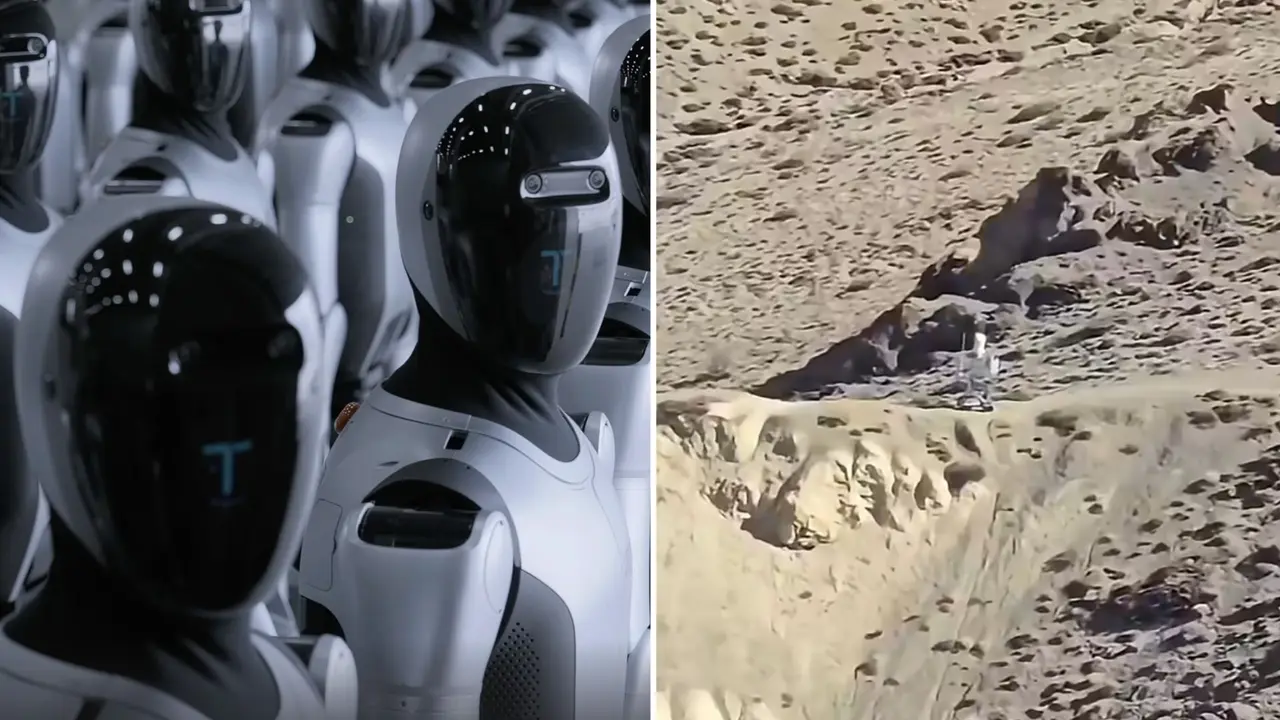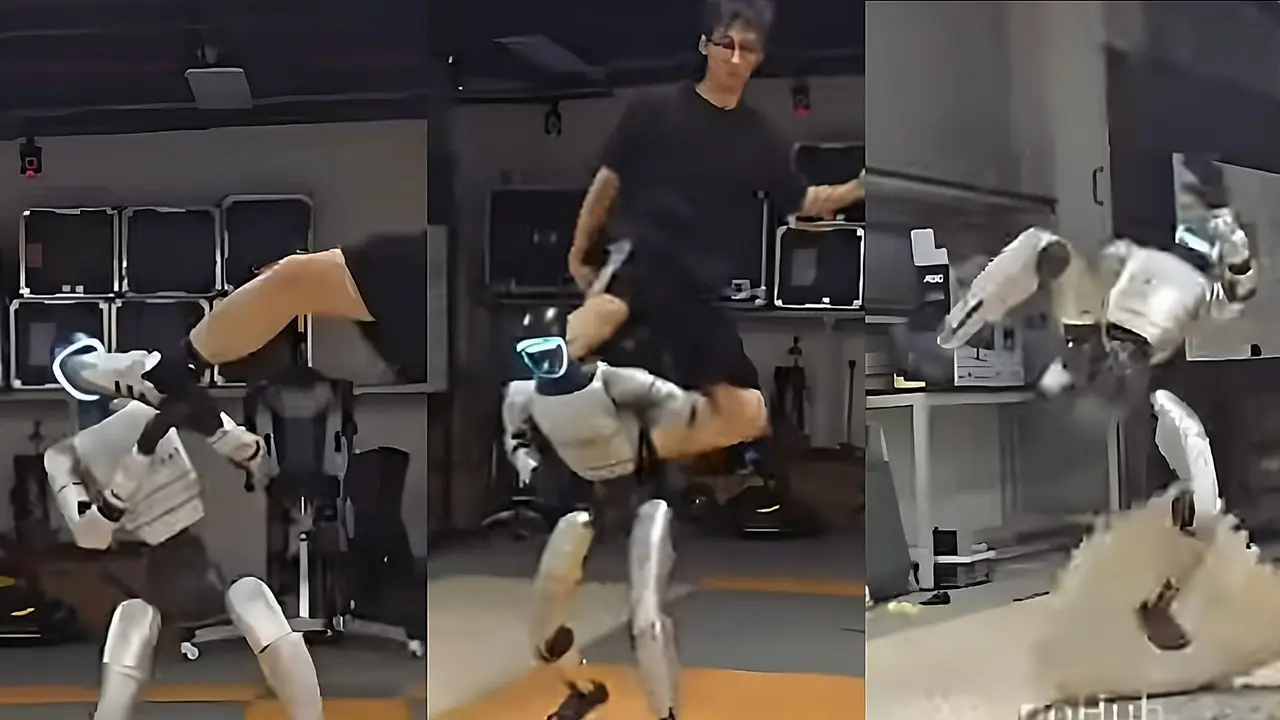China Deploys AI-Powered Spherical Robot for Urban Policing
2 Sources
2 Sources
[1]
China's AI spherical robot cop can capture criminals, patrol streets
Videos on Chinese social media show AI-powered spherical robots patrolling streets with officers, detecting and stopping crime. Chinese law enforcement agencies have been reported to have initiated tests of an autonomous spherical robot. The spherical robocop in use is named RT-G, developed by home-grown robotics company Logon Technology. Engineered for extreme environments, RT-G is capable of navigating both land and water at speeds of 22 mph (35 km/h) while withstanding impacts up to 8,818 pounds (4 tons). However, its most remarkable feature lies in its urban patrol capabilities. Powered by advanced AI, the RT-G assists law enforcement by identifying and immobilizing criminals, enhancing public safety.
[2]
Chinese Police Roll Out Nightmarish Crime-Fighting Robot - Decrypt
In a scene right out of Black Mirror, police in China have rolled out the newest innovation in autonomous AI-powered street crime fighting: A spherical, virtually indestructible, amphibious, heavily armed device that resembles a giant bowling ball. The RT-G, manufactured by Shenzhen-based Logon Technology Co., Ltd., is the Swiss Army knife of crime-busting technology. According to reports, the robot is driven by AI, which can help it ID suspects via facial recognition and notify law enforcement of suspicious activity, and it has an onboard arsenal that includes tear gas sprayers, an extremely loud sound-wave dispersal horn, and even a gun that can entrap a suspect with a net. It can supposedly withstand an impact of up to four tons. A number of videos posted on social networks this week have gone viral, showing the robot patrolling streets in various smaller Chinese cities. On TikTok, Peoples Daily, China's official state-run medium, uploaded a video of a human SWAT team marching alongside the killer bowling ball in the coastal town of Wenzhou, China. Also featured was a far less menacing-looking robot dog. The RT-G's design is based on the work of a team of researchers from Zhejiang University's State Key Laboratory of Industrial Control Technology, posted in a research paper last year. The aim of the original design was to operate in harsh "unknown environments" like the Moon or Mars. Now, it appears the government in China intends to use the thing on the streets of various Chinese cities, including Chengdu, where it was unveiled. The RT-G has a battery life of ten hours, can travel up to 21 miles per hour, and can withstand an impact of up to four tons. "It is highly risky to explore harsh environments and unknown environments, such as wild, fire fields and underground caves," the researchers wrote. "Using mobile robots to replace humans in these exploration tasks can effectively ensure human health and safety." The RT-G's mobility is powered by a heavy internal pendulum encased within its spherical shell. For sci-fi fans, BB-8 from Star Wars: The Force Awakens or the Droidekas from Star Wars: The Phantom Menace may come to mind. While those droids primarily functioned on land, the RT-G is designed to also operate in the water as well. Unlike humanoid robots prone to awkward tumbles, the RT-G's round shape ensures it won't ever fall flat on its faceplate. One of the other benefits of its design, the researchers said, is that because of its spherical shape, the robot can't be immobilized by flipping the robot onto its back since, er, it doesn't have one. But are these the droids we're looking for? Until now, similar devices were intended for the exploration of outer space. In 2001, NASA experimented with the idea of using a two-story tall beach ball, "the tumbleweed rover," to explore the Martian surface. And in 2004, Stamford Connecticut-based GuardBot, launched a spherical drone that was developed for the European Space Agency for a mission to Mars. The United States Navy and Marine Corps began testing the GuardBots for reconnaissance missions in 2015. Whether the RT-G heralds a new robotic frontier or rolls off into the annals of internet fame, one thing is clear: Hollywood may have found the star of its next action blockbuster. Rubber 2: The Tire Strikes Back, anyone?
Share
Share
Copy Link
Chinese law enforcement agencies have begun testing an autonomous spherical robot called RT-G for urban patrols. Developed by Logon Technology, this AI-powered device can identify suspects, immobilize criminals, and operate in various environments.

China Introduces AI-Powered Spherical Robot for Law Enforcement
In a move that blends cutting-edge technology with law enforcement, Chinese authorities have begun testing an AI-powered spherical robot for urban patrols. The robot, named RT-G and developed by Shenzhen-based Logon Technology Co., Ltd., represents a significant advancement in autonomous crime-fighting technology
1
2
.Technical Specifications and Capabilities
The RT-G boasts impressive technical specifications that make it suitable for various environments and tasks:
- Speed: Can travel up to 22 mph (35 km/h) on land and in water
1
- Durability: Capable of withstanding impacts up to 8,818 pounds (4 tons)
1
2
- Battery life: 10 hours of operation
2
- Mobility: Powered by a heavy internal pendulum within its spherical shell
2
- Amphibious: Designed to operate both on land and in water
2
AI-Powered Policing Features
The RT-G's most notable feature is its AI-driven urban patrol capabilities:
- Facial recognition: Can identify suspects using advanced AI algorithms
2
- Suspect immobilization: Equipped with tools to stop criminals
1
- Surveillance: Detects and reports suspicious activities
2
- Arsenal: Includes tear gas sprayers, a sound-wave dispersal horn, and a net-launching gun
2
Origins and Development
The RT-G's design is based on research conducted at Zhejiang University's State Key Laboratory of Industrial Control Technology. Originally intended for exploring harsh environments like the Moon or Mars, the technology has been adapted for urban use
2
.Deployment and Public Reaction
Videos circulating on Chinese social media platforms show the RT-G patrolling streets alongside human officers in various smaller Chinese cities, including Wenzhou and Chengdu
1
2
. The People's Daily, China's official state-run medium, shared footage on TikTok featuring the robot working with a SWAT team2
.Related Stories
Comparisons and Precedents
The RT-G's spherical design draws comparisons to fictional robots like BB-8 from Star Wars: The Force Awakens. However, it also has real-world predecessors:
- NASA's "tumbleweed rover" concept from 2001 for Mars exploration
2
- GuardBot, a spherical drone developed for the European Space Agency in 2004, later tested by the U.S. Navy and Marine Corps
2
Implications and Concerns
While the RT-G represents a significant technological advancement in law enforcement, its deployment raises questions about privacy, surveillance, and the increasing use of AI in policing. The integration of such advanced technology into law enforcement practices may have far-reaching implications for civil liberties and public safety
2
.As China continues to test and deploy these AI-powered robots, the global community will be watching closely to see how this technology impacts urban policing and whether similar systems will be adopted in other countries.
References
Summarized by
Navi
[1]
Related Stories
Chinese spy robot video near India border sparks debate as China deploys humanoid patrols
03 Dec 2025•Technology

China's Humanoid Robot G1 Withstands 'Violence Test' in Viral Video
17 Sept 2025•Technology

China Warns of Humanoid Robot Bubble as Investment Floods Emerging Industry
28 Nov 2025•Business and Economy

Recent Highlights
1
Google launches Gemini 3 Flash as default AI model, delivering speed with Pro-grade reasoning
Technology

2
OpenAI launches GPT Image 1.5 as AI image generator war with Google intensifies
Technology

3
OpenAI launches ChatGPT app store, opening doors for third-party developers to build AI-powered apps
Technology





